The Critical Ribbon Blender Parts You Should Know About
If you need equipment to mix and blend dry bulk materials, liquids, and even low-viscosity pastes, ribbon blenders will be your best bet, no matter your industry.
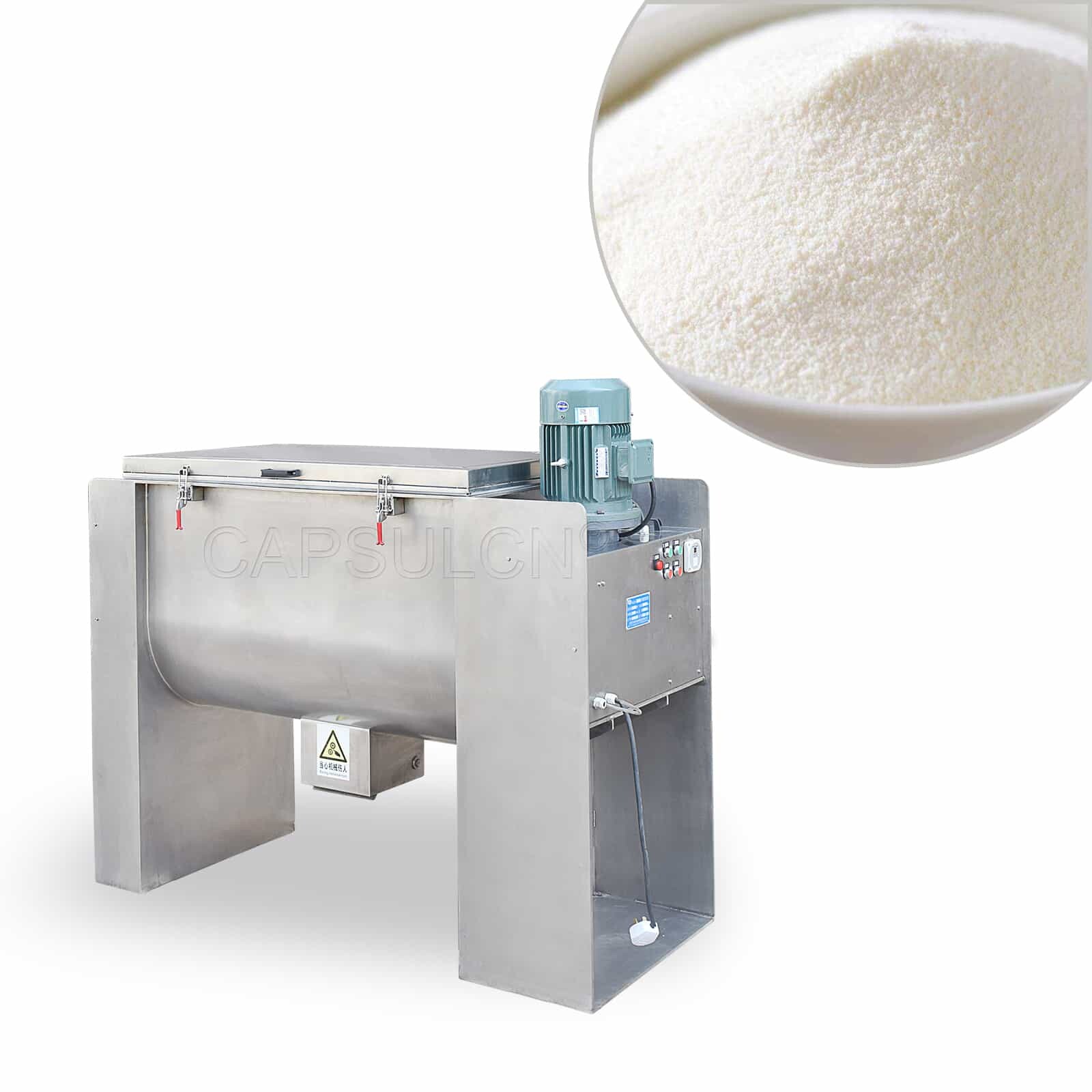
There are many advantages of ribbon blenders. One of the reasons that make ribbon blenders a popular option for a wide range of blending tasks is their simple yet effective design. If you're interested in, scroll down to read more. This article will guide you through everything about the ribbon blender design and the critical ribbon blender parts.
What is a ribbon blender?
First of all, let's take a look at a brief intro to ribbon blenders.
Ribbon blenders are occasionally called ribbon mixers. They are typically employed when ingredients need to be mixed evenly throughout.

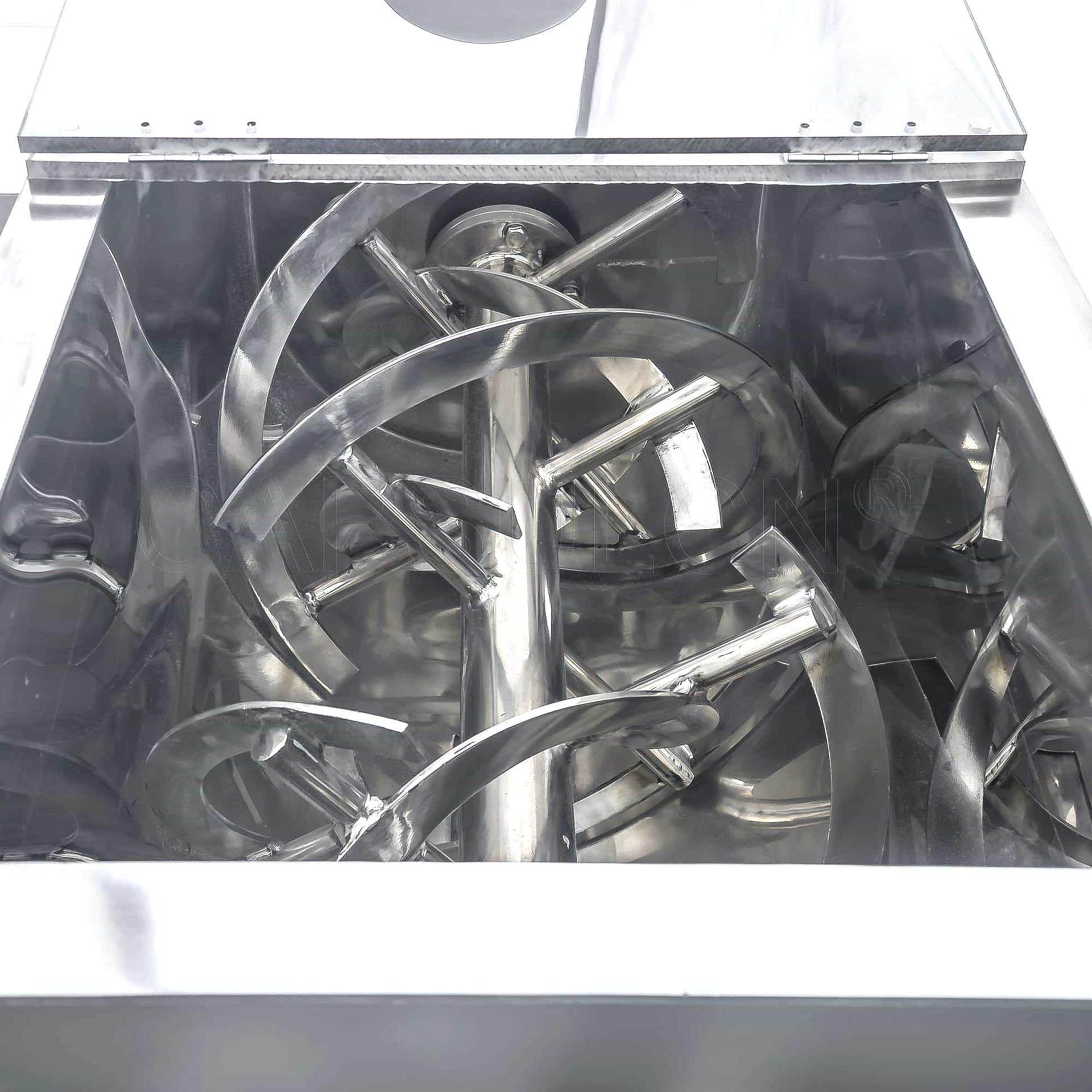
The ribbon blender features a central shaft with helical blades. These blades are slanted in different directions, resembling metal ribbons wrapped around the shaft. This allows the blender to move particles in two directions simultaneously, ensuring that all ingredients are thoroughly mixed.
It's worth mentioning that ribbon blenders are one of the most widely used mixing devices in the market. This versatile machine is capable of blending a broad assortment of products across all different industries, ranging from pharmaceuticals to food, cosmetics, chemicals, fertilizers, and others.

Construction and design of ribbon blender
As we said before, ribbon blenders have a straightforward design and constitution.
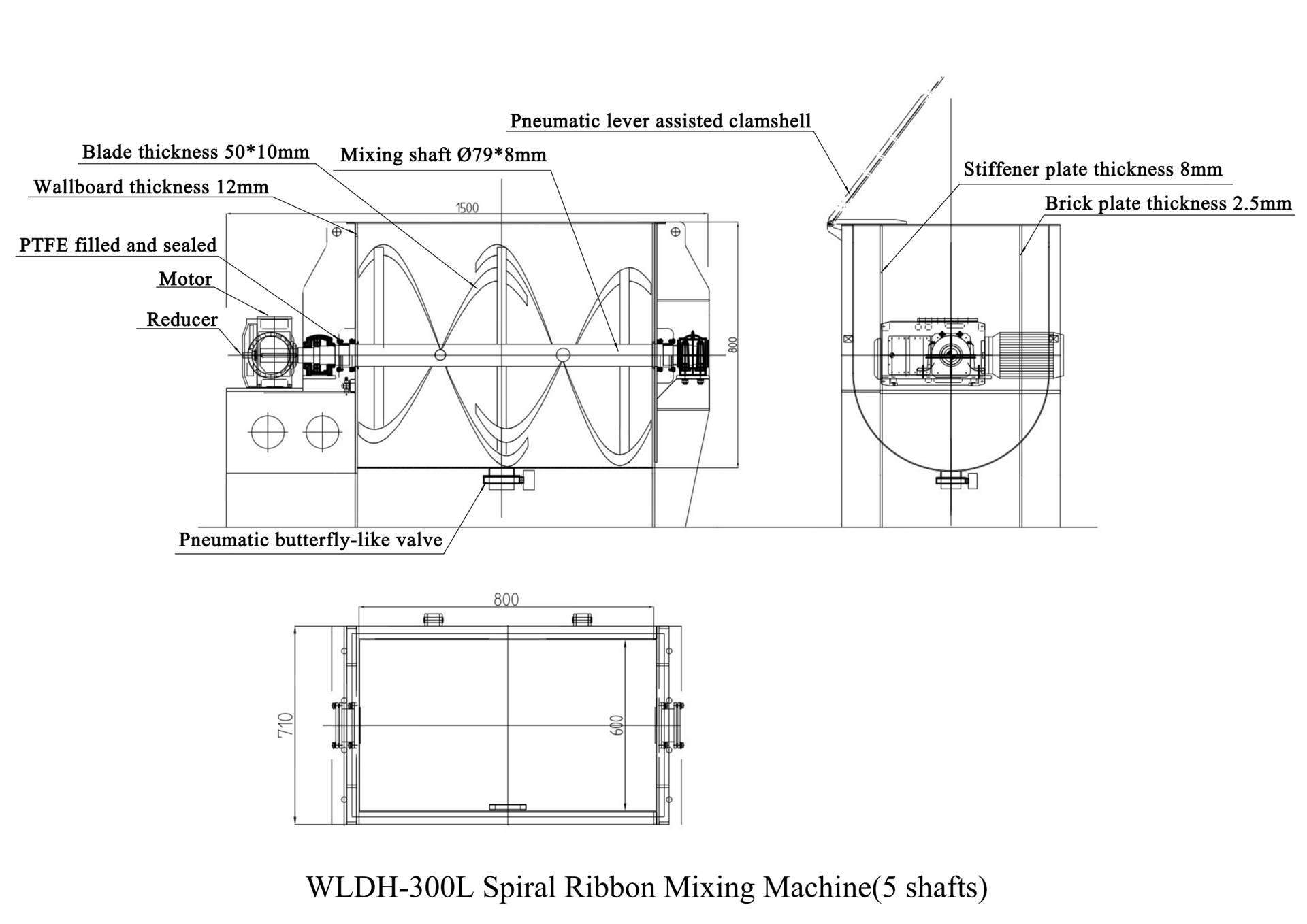
This style of blender typically consists of a U-shaped, horizontal trough that houses a double helical ribbon agitator. The agitator comes with a shaft mounted in the center of the trough. The helical blades winding around the shaft make the design of ribbon blender look like a strand of DNA.
A driving system that consists of a motor, gearbox, and couplings provides power to the ribbon agitator. For example, if you want to blend 1000 kg of product mass, your ribbon blender typically requires a 10-15 hp motor. The specific power might vary depending on the solids to be mixed.
The ribbon trough has end plates bolted or welded at both ends, allowing the ribbon agitator to run through the trough. The ribbon blender equips a sealing arrangement where the shaft exits the trough to prevent material from escaping and stop impurities from entering the trough.
The material to be blended is fed into the ribbon blender through the top cover. Some models are designed with a hopper on the top cover for easy feeding. Depending on specific blending requirements, some ribbon blenders are provided with a spray system for coating or an outer jacket for heating or cooling.
The mixture leaves the blender from the bottom of the trough via a discharge valve. The discharge valve can be manually operated or pneumatically actuated. By the way, the particles mixed by a ribbon blender are discharged by the rotating agitator, so it takes time to achieve complete discharge.
Further, to comply with cGMP/GMP requirements, a wide variety of ribbon blenders are fabricated from mild steel or 304/316 stainless steel.
In a nutshell, the robust and efficient construction and design of ribbon blender make it a reliable and cost-effective option for mixing.
What are the critical ribbon blender parts?
As you can tell, ribbon blenders feature a straightforward yet versatile design. There are a variety of parts that enable the equipment to achieve a homogeneous blend. Let's get to the main topic of this article - ribbon blender parts.
1. Top cover
The top cover is one of the essential ribbon blender parts, as materials to be blended by ribbon blenders are all fed from the top of the equipment. The top cover is available in various designs.
For example, iPharMachine WLDH Series Ribbon Blenders are provided with multiple styles of top covers. As shown in the pictures below, the left (WLDH-500L) comes in an airtight stainless steel construction, while the right (WLDH-1000L) is composed of two clear acrylic sheets. Both of them feature an ergonomic handle for easy access.
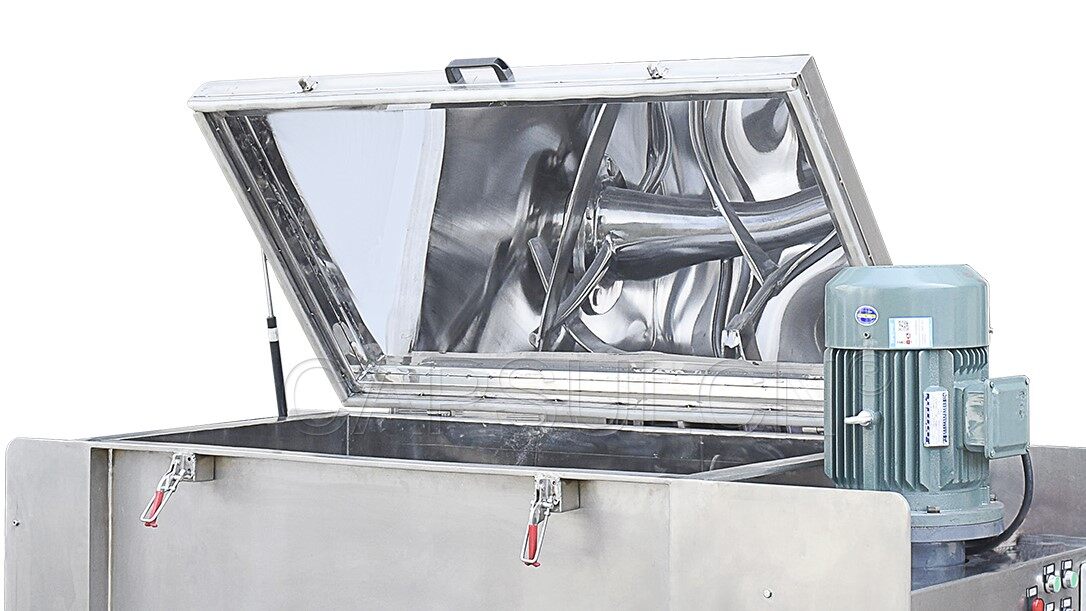
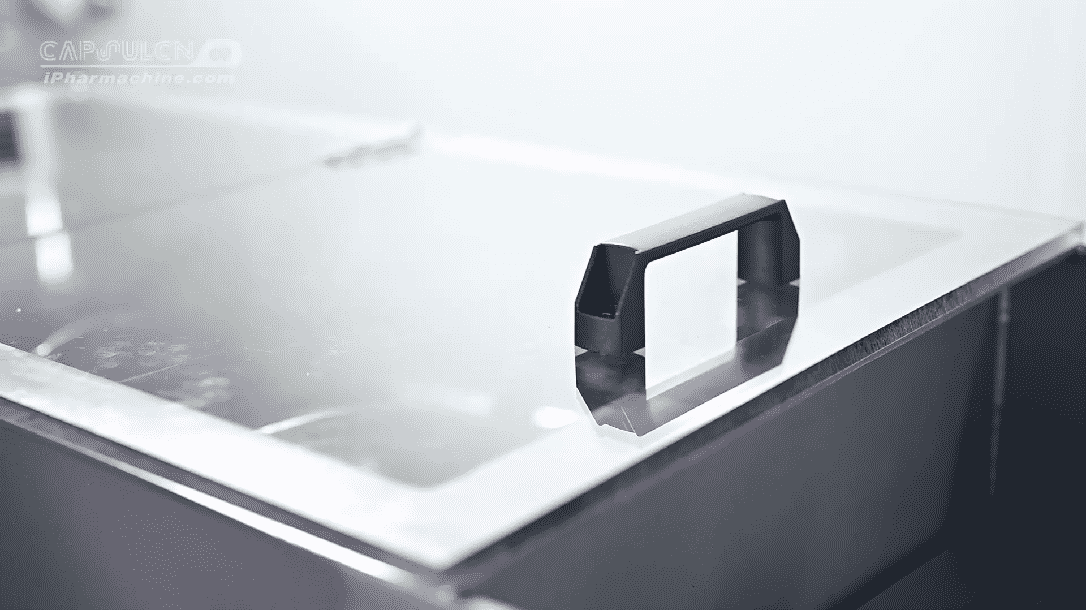
Besides, many ribbon blenders are provided with a feed hopper or a vacuum hopper for easy material loading. These models save labor costs and ensure safe feeding, but on the other hand, they raise your overall costs of investing. Of course, these variations are also available at iPharMachine.
2. Trough
The trough is the largest part of a ribbon blender. It's where the blending process takes place. For the manufacture of cGMP/GMP-compliant products, the trough of the ribbon blender is made from 304/316 stainless steel. The interior wall of the trough is fully welded and polished for more efficient mixing.
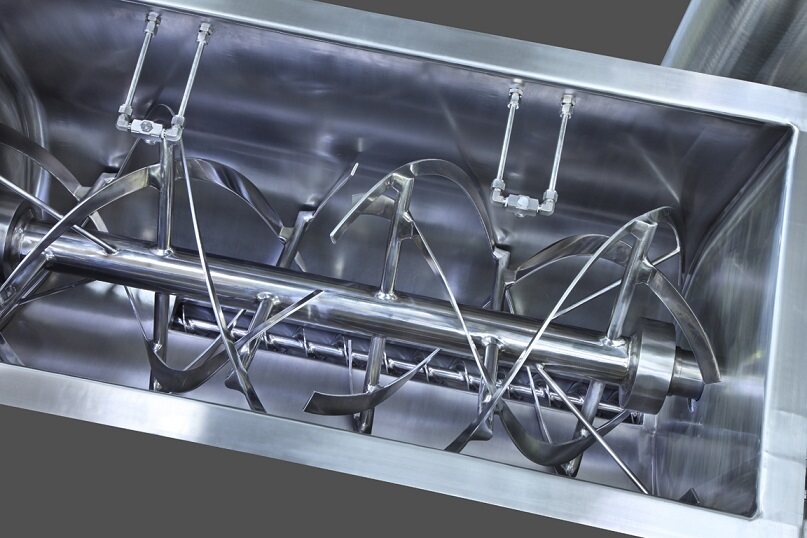
(Image Source: powderbulksolids.com)
U-shaped troughs are the most popular mixing containers used in ribbon blenders. There are also many other types, such as semi-cylindrical and fully-cylindrical troughs out there, depending on different mixing applications.
Further, thanks to the versatility of the ribbon blender, the trough can be installed with choppers or spray systems as and when required to blend liquids, semi-solids, and low-viscosity pastes.
3. Ribbon agitator
The ribbon agitator lies at the heart of the design of ribbon blender. As one of the essential ribbon blender parts, the agitator consists of a rotating shaft and a collection of inner and outer helical blades called ribbons.
The agitator's inner ribbons move materials from the center to the ends of the trough, while its outer ribbons move them from the ends to the center. These blades work together to ensure uniform mixing.
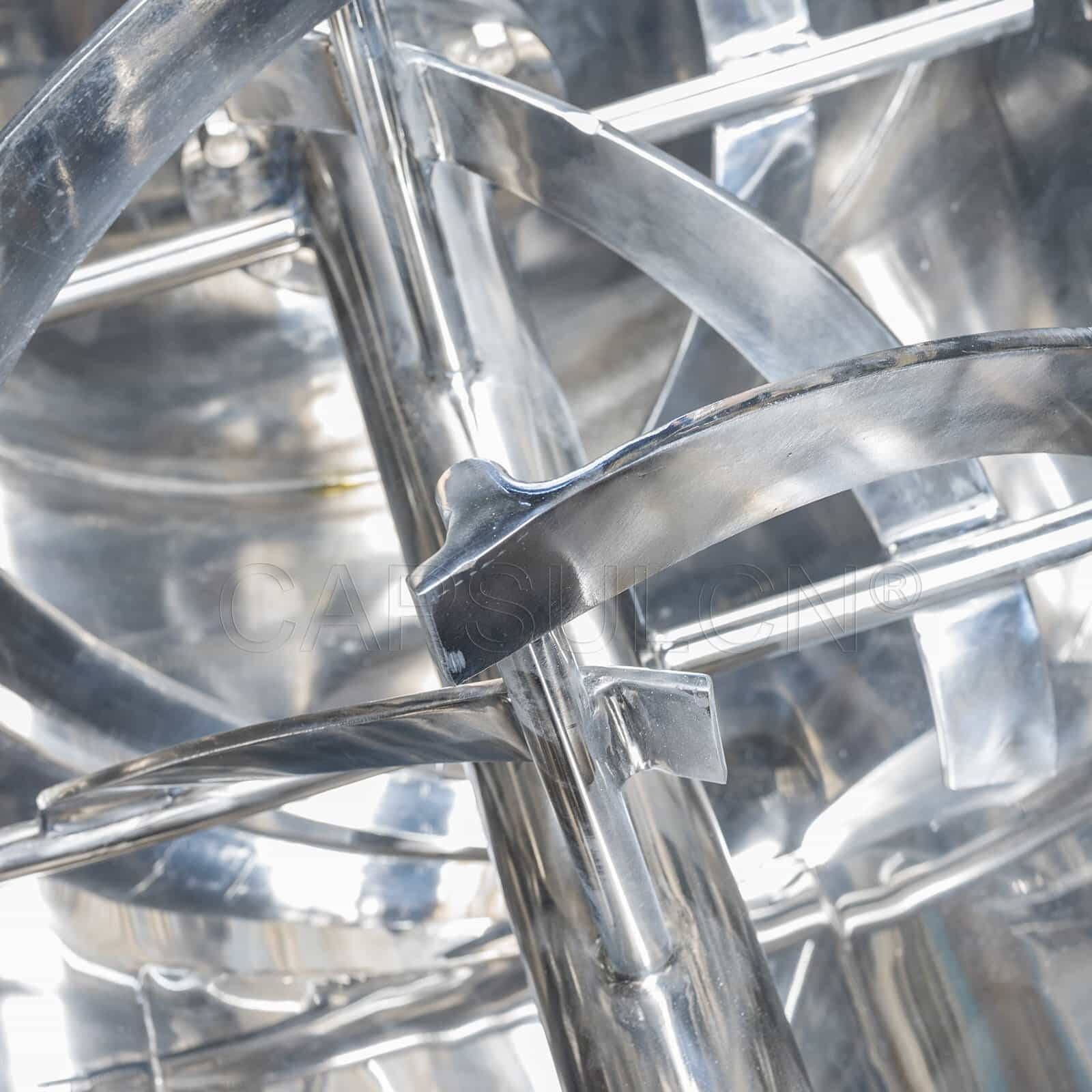
As a result of the well-balanced radial and axial movement, a homogeneous blend can be achieved in a short time.
If you're looking for a quality ribbon blender, here's a tip. The distance between the ribbon tips and the trough surface must be carefully controlled.
The agitator shaft is placed in the center of the horizontal trough. The helical blades are supported by various spokes that are welded onto the shaft. When the shaft rotates, the helical ribbons move the materials in a radial and axial flow pattern, enabling them to be thoroughly mixed in the trough.
The shaft is fitted with seal arrangements at both ends. They work to prevent materials from traveling out of the trough and keep the blender dust-tight.
4. Discharge valve
The ribbon blender discharge valve is used to eject the blends from the trough. It determines the discharge rate of your ribbon blender in a controlled manner.
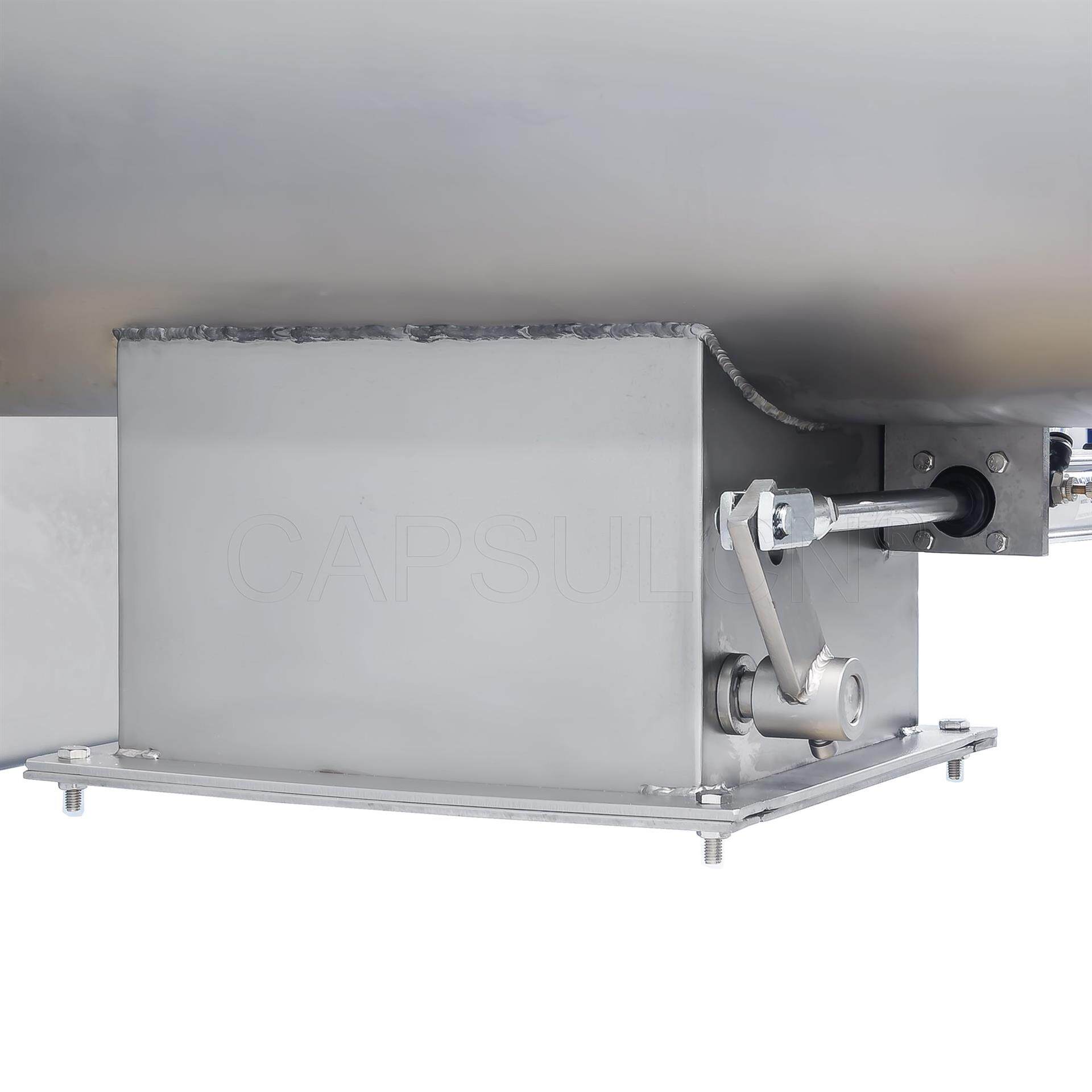
A quality discharge valve is able to discharge your mixed product quickly. At the same time, it makes your ribbon blender easier to clean between batches.
Besides, the ribbon blender discharge valve provides seal tightness, keeping the materials from escaping during the mixing process.
There are many different styles of discharge valves available in the market, including butterfly, side-gate, knife-gate, spherical, and many other types. Most ribbon blender discharge valves can be operated manually or by an external pneumatic source.
5. Drive system
The drive mechanism plays a big part in automatic systems. It is employed to transform electrical energy into mechanical motion.
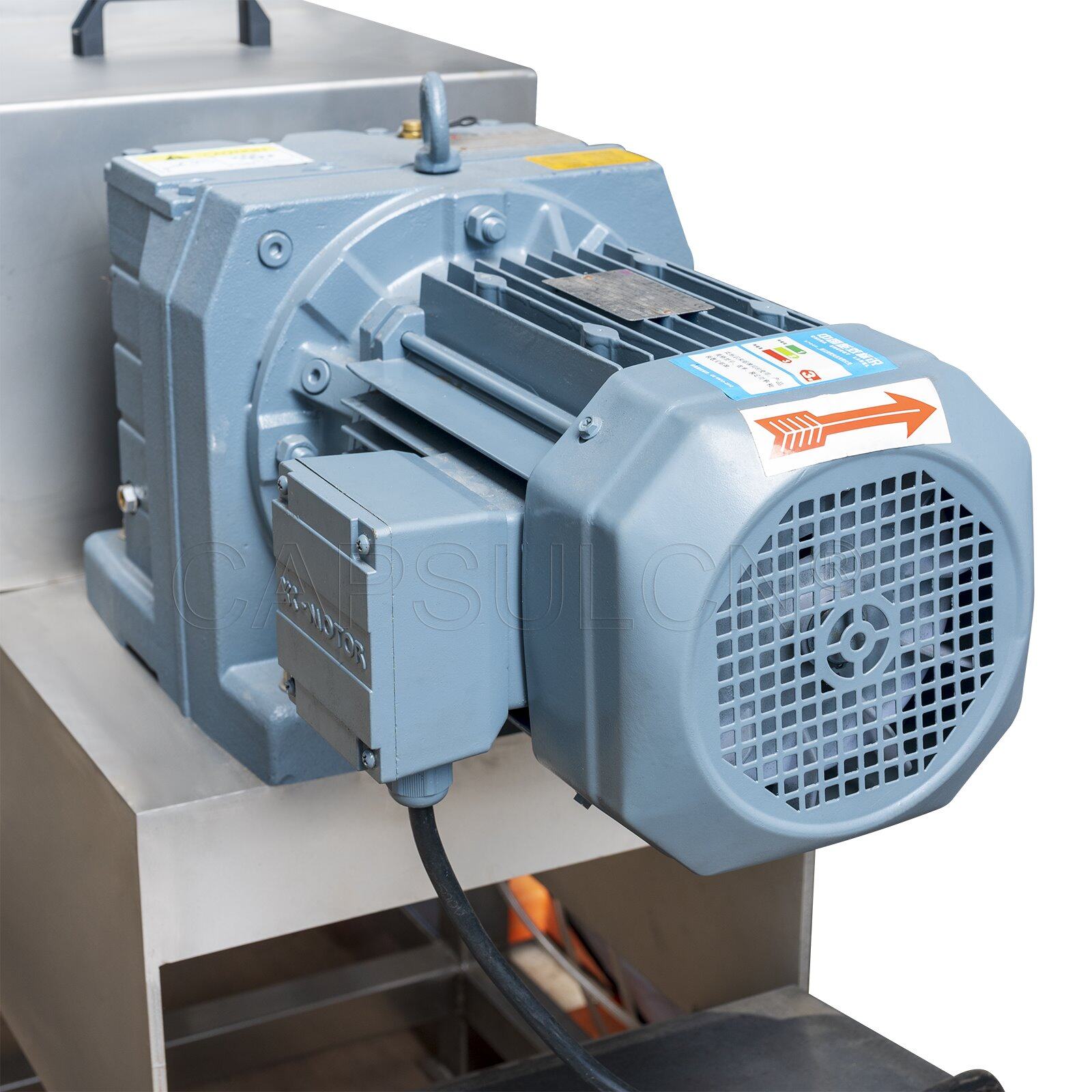
Ribbon blenders are typically powered by a drive. The drive system consists of a motor, a gearbox, and couplings.
Most ribbon blenders today are equipped with a variable frequency drive (VFD). The VFD allows the system to start slowly and safely even when the machine is fully loaded. During mixing and discharge processes, variable speed control is better than single-speed operation.
A one-piece motor reducer or gearmotor is a ribbon blender's most dependable drive configuration. The direct-drive arrangement is more compact and cleaner than chain and belt drives. Also, it's more quiet and low-maintenance. A VFD and a gearmotor are a good combination.
6. Electrical control panel
The control panel typically houses a collection of electrical components. The components provide signals to regulate the operation of machinery and equipment. It's one of the most critical ribbon blender parts.

The control panel enables operators to change the blender's settings and turn on or off operation. At a basic level, a ribbon blender control panel consists of a power indicator, mix start/stop buttons, discharge on/off buttons, an emergency stop button, and a timer for batch time setting.
Read More:
Ribbon Mixer Working Principle: A Complete Guide
The bottom line
At iPharMachine, we stand out from the competition by combining top-quality ribbon blender parts and the flexible design of ribbon blender. Check out our selection of Ribbon Blenders if you're seeking a quality ribbon blender. Our machines all come with the most outstanding customer service you can get.
Leave your comment
Also Offers


Containment Automatic Capsule Filling Machine SFK-703

Fully Automatic Dosator Capsule Filling Machine CZ-40

Our Team
As an expert in the pharmaceutical and pharmaceutical packaging industry, iPharMachine has provided solutions for hundreds of pharmaceutical and health product manufacturers for 17 years. By visiting customers, we get good reviews from our customers.
- info@ipharmachine.com
- English Español Deutsche







